I’ve been seeing a lot of articles for the past two months about the emergence of periodical cicadas–these are the ones that stay underground for 17 years. Many of the articles use attention-grabbing words with what I think of as a strong, negative connotation, like invasion, swarm, or scary. If you ask me, these articles only do a disservice to the AMAZING insects that have been underground all of this time.
Cicadas are a kind of insect that live underground as nymphs before traveling up a tree or rock or other object and climbing out of their nymphal skin as winged adults. There are cicadas that emerge every year, staying underground only one to five years– we often refer to these as “dog day cicadas”– and then there are periodical cicadas that stay underground for 13 or 17 years depending on the species. The talk lately on the news has been all about the emergence of the ones that have spent the past 17 years underground.

Just imagine for a minute how incredible that is. The insect hatches from a tiny egg that the females insert into a branch in the forest, high above the ground. The nymph falls to the ground. Then, the tiny creature burrows through the leaf litter and into the soil, deeper and deeper until it can find a tree root. Then, for the next 17 YEARS! it feeds on the sap of tree roots. Think of all that has happened since 2004! All of this time those nymphs have been down in the darkness of the soil, just going about their business, out of sight and mind.

In 2008 I had the incredible opportunity to witness one of these 17 year cicada emergences, and all I can say is WOW. I was in the midst of my thru-hike of the 2,175 mile Appalachian Trail, just outside of Hot Springs North Carolina. It was May 25th, just 20 days into my hike and I was still hiking with my brother then. We had a great campsite in the middle of the woods and amazingly, there was a pile of firewood beside a well-made fire pit so we made a fire. We sat beside the fire for a while, but then eventually, weariness took over and it was time for sleep. I moved off into the forest, away from the fire, shutting off my head lamp when I was a distance away. And then I became aware of thousands of small sounds– like raindrops hitting the leaves but there was no water falling. The sounds were all around me. Curious, I turned on my head lamp again and to my astonishment, saw dozens of inch-long cicada nymphs crawling through the leaf litter.

As I shone my light around I could see them everywhere, in all stages of their emergence–coming out of quarter-sized holes in the ground, crawling through the leaf litter, climbing up trees, rocks, plants, even the rope I used to hang my bear bag. And, as I stood there, still in the forest, they even tried to climb up my legs, but of course I moved off, running excitedly to get my brother to share the phenomena.
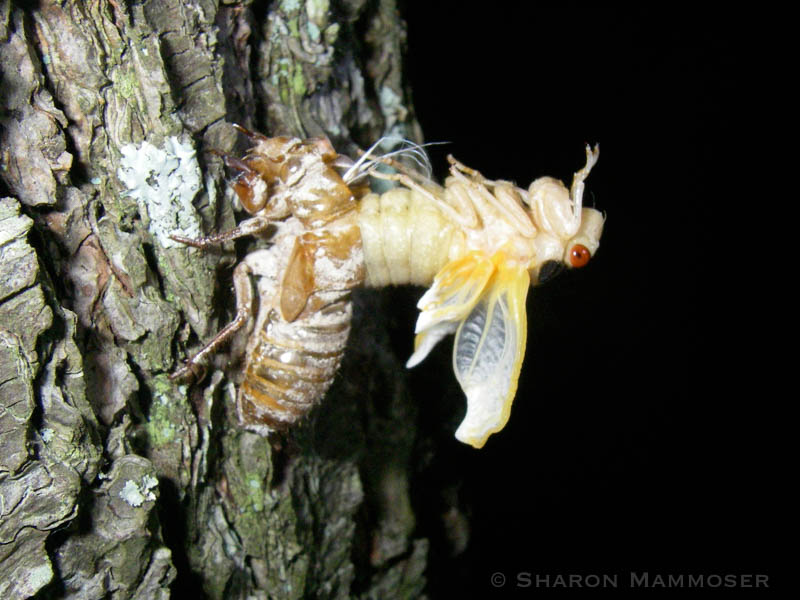


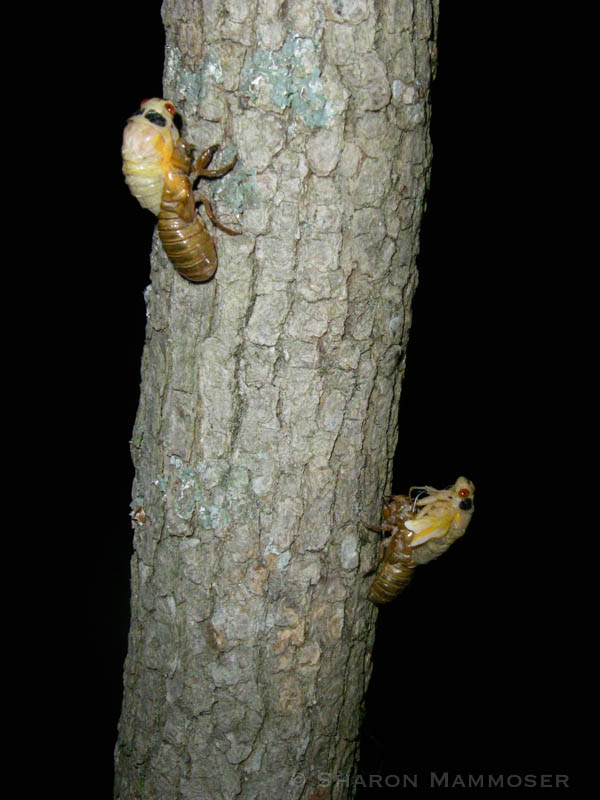
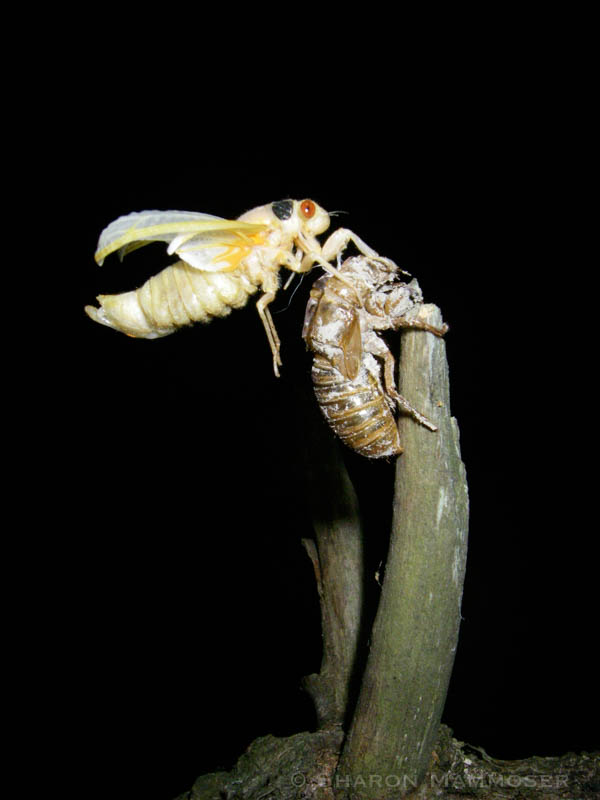


Many people would not know what they were looking at, but as a naturalist and person who has been studying and learning about nature for just about my entire life, I knew and recognized what an incredible thing it was–witnessing the emergence of a brood of 17 year cicadas. I had only read about it but had never seen it in person. What an exciting night! I could hardly believe my luck!
For a long time that evening, my tiredness and desire to go to bed disappeared and all I could do was walk around, shining my head lamp around in awe. We spotted every stage of their emergence, including cicadas that had lived 17 years underground only to fall from their nymphal skins to the ground, to die before getting the chance to fly. When they are coming out of their skins they are extremely vulnerable since their wings have not yet hardened. If they come into contact with something, like a branch or leaf, if they fall to the ground, then they can die or be deformed.
And then, eventually we went to sleep, as did the cicadas, since they call in the daytime, not the night.
The next morning as we got on the trail, we walked north listening to the deafening calls of thousands of cicadas. It was one of the most incredible natural history things I’ve witnessed in my lifetime! And all around in the trees, on the branches and on the ground, there were signs of the great emergence–holes, shed skins, dead and live adults.
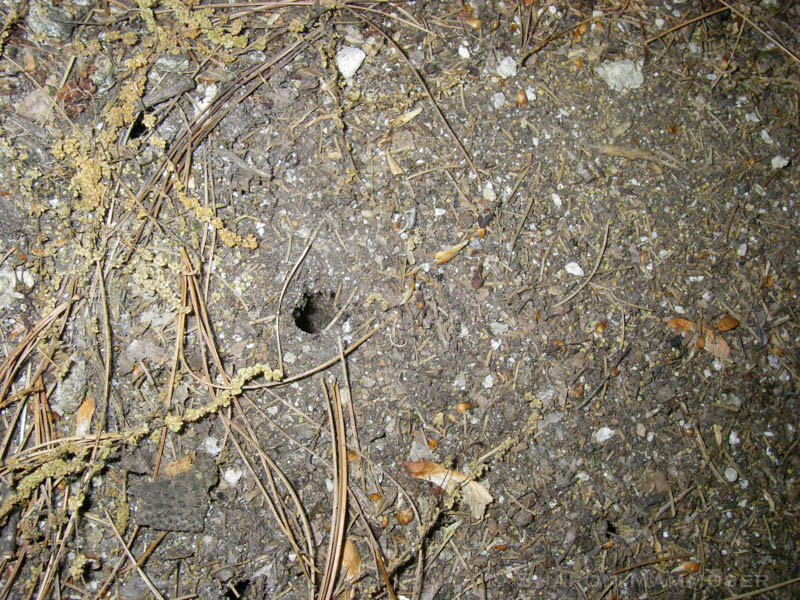

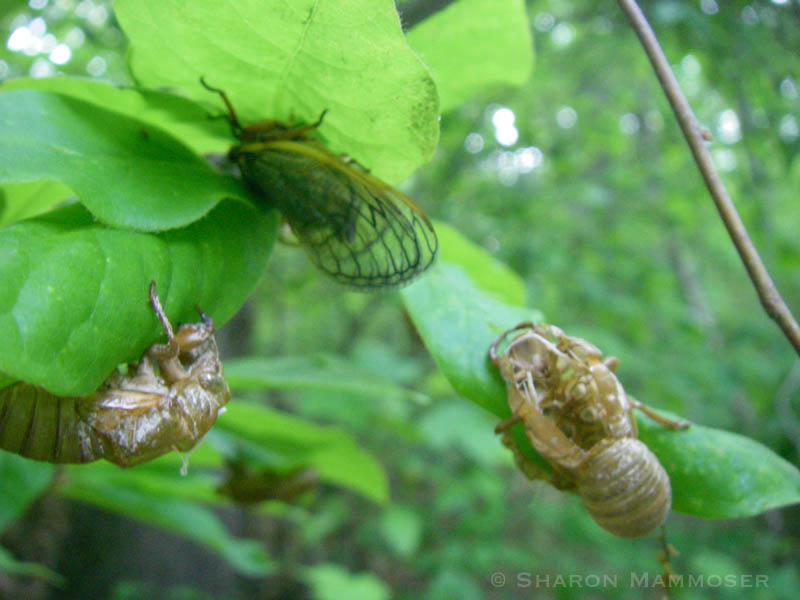
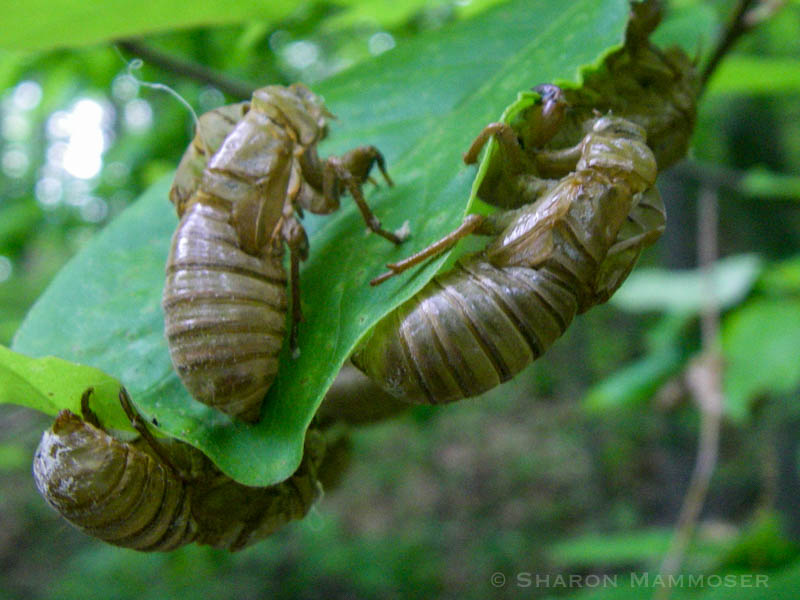
The scientists say this year another emergence is set to happen throughout states on the east coast. There are even maps showing where these broods will emerge. You can check it out and see if you might have the chance to see it near you–or more appropriately, to HEAR them near you, as if they’re there, you’ll know it from the deafening calls. And I urge you to go if you get the chance! It really is worth experiencing and not at all scary or alarming like some of the new stories make it out to be. Instead, it is an incredible lifecycle –a chance to witness one of Mother Nature’s most amazing creatures.

They don’t bite or sting and even though there could be thousands, they have little negative impact. LOTS of animals eat the cicadas, which are high in protein. There are even recipes for us humans to collect them and add them to the menu. Are you up for that? I can’t say that sounds very appealing, but many animals find them delectable. The egg-laying in branches is the only time they can cause damage and most of this is just nature’s way of pruning the trees. Most trees deal with this just fine and little evidence is left behind in the coming weeks. They only time they do damage is when there are a lot of cicadas laying eggs in young saplings or nursery trees and people can prevent damage by covering young trees.
Cicadas call in the daytime and each species has a distinctive call. Males create their song by vibrating hollow, drum-like organs called tymbals on the sides of their bodies. Did you know the cicada has one of the loudest sounds in the insect kingdom? Or that when the 17 year cicadas emerge, they may be as dense as 1.5 MILLION per acre! Imagine the sound! Or that they are the longest lifecycle of any insect?
So yes, let’s play Can You Spot the Lie, featuring the periodical cicada:
- When 17 years have passed, Periodical Cicadas are triggered to leave the soil when the temperature reaches 64/65 degrees 8 inches below ground
- While underground for 17 years, Periodical Cicadas shed their skins (molt) 5 times
- Periodical Cicada eggs hatch 1 year after females deposit them in tree branches, at which point the nymphs fall to the ground and burrow into the leaf litter and the ground
Know which one of those is the LIE? Two are the truth and ONE is a lie! Click here to see if your guess was correct.


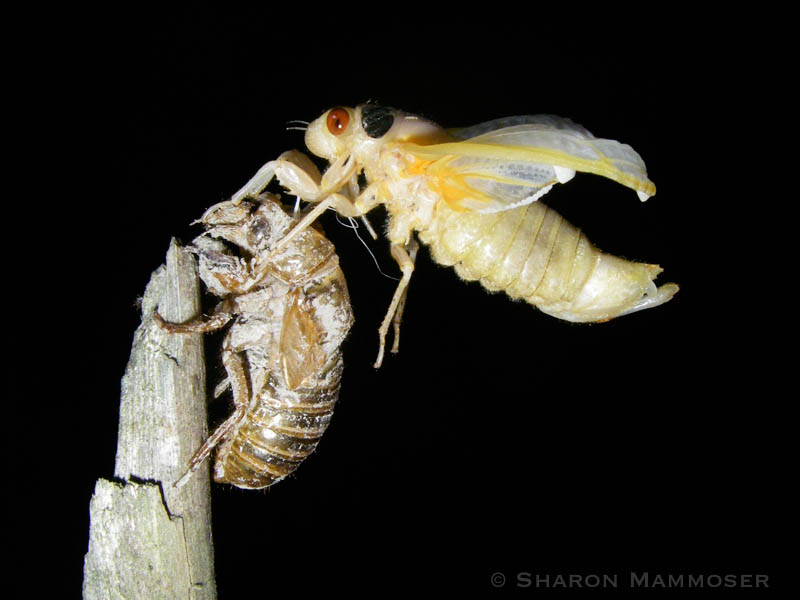
Your depth of Nature knowledge never ceases to amaze me! You continue to enlighten me about a realm I consider ‘church’. Photos, videos, trail cams, quizzes…it is all so engaging. My sincerest gratitude❣️🪶
Arden🦋
Thank you so much for your thoughtful comment, Arden. I appreciate all the feedback. I’m glad to know people who consider it church too. We are kindred spirits!
Wow! What amazing photographs of the Cicadas! i always learn something when I visit your blog!
Renee, I’m so glad! My goal is always to share what I learn so others can learn too. Thanks for reading and taking time to reply!